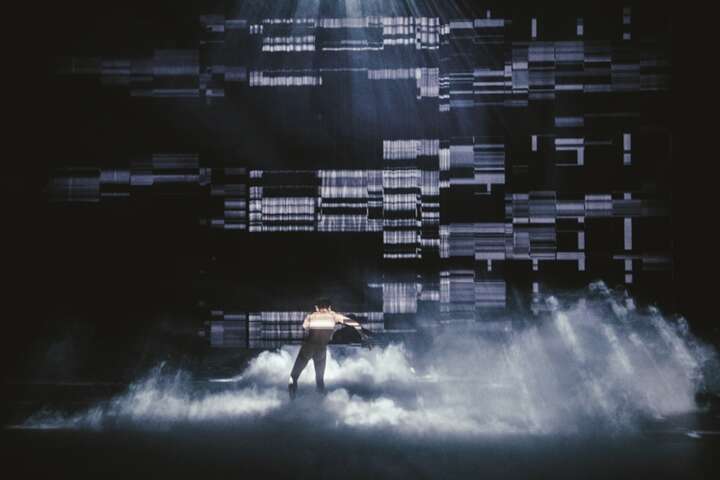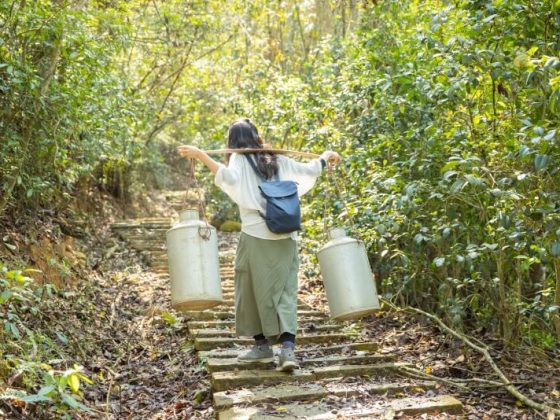Author / Elisa Cohen and Jamie R. Wood
Photographer / Ultra Combos, Ro-hsuan Chen, Shi-bang Wang, Dinghan Zheng, Xinyi Yu, Samil Kuo
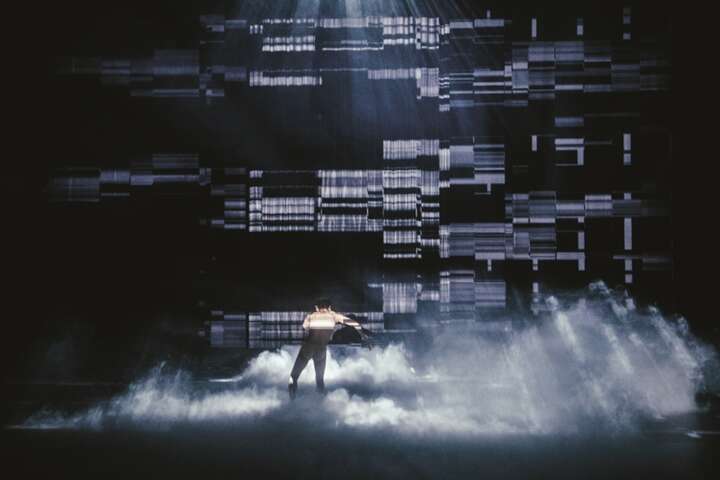
What are the essentials to make one’s dream come true? A determined mind? A burning desire? Strong convictions? All of the above, actually, but how about a little help from the environment? A place that provides opportunities and resources for those who are ready to shine.
Since 1875, the year of the official establishment of Taipei City, this has been a place for people to pursue their dreams. Ancient immigrants built their homes and businesses here, bringing prosperity to Taipei that has persisted to the present day. The small but mighty city now is the home of over two million residents, including people of many different nationalities, ethnicities, sexual orientations and professions. While these people live their dreams, the city’s unlimited access to world-class companies across every industry and unparalleled resources for the arts community offer countless opportunities that one won’t find anywhere else.
As the season shifts to artful autumn, a season when Taipei holds all kinds of artistic events, we have invited three groups of stars who are rising from their own artistic fields to share their stories of making their dreams come true in Taipei. From dancing, to fashion design to music, join us on this journey as we witness the moment when wish becomes reality.
Spinning into the Spotlight
Dancer and choreographer Hsieh Chieh-Hua 謝杰樺
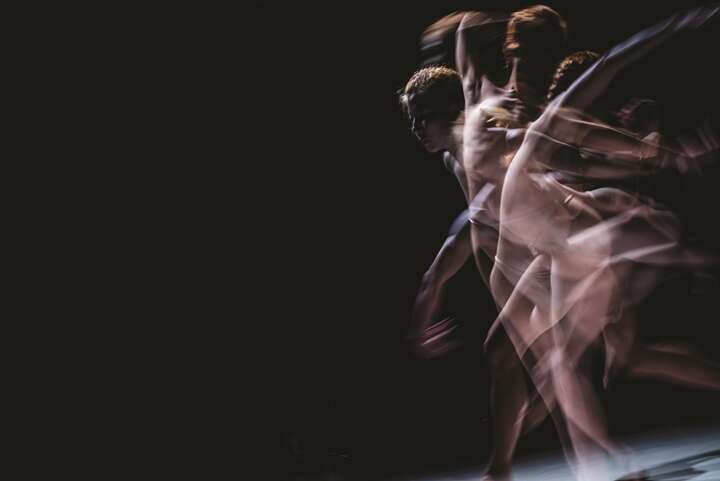
Artists often find inspiration in their surroundings. With rich cultures and natural resources, Taipei nurtures its local artists from their early struggles to the heights of success. Hsieh Chieh-Hua, a dancer and choreographer who established the Anarchy Dance Theatre (安娜琪舞蹈劇場) dance troupe, started off basing his choreography on his life experience in Taipei. He shares with us the different facets he has observed in the city and how he has laid a foundation to keep moving towards his next goal.
“There are all sorts of events and talents in Taipei. Everyone is exploring different possibilities and opportunities for innovation. Such an environment is close to creators’ mindsets, allowing us to take the path we imagine,” says Hsieh.
Different from other forms of art, dance performances are dynamic, and the artists usually express their thoughts on issues through relatively abstract things, like ideas or feelings. Therefore, they would need an open-minded audience that embraces diversity. “Taipei is a place where people are responsive and receptive to novel things. So, it’s easier for us to find people to communicate with. To choreographers, Taipei is a friendly city,” Hsieh explains.
Taipei’s natural environment is also indispensable for artists. “A fascinating thing about Taipei is the accessible natural environment nearby,” Hsieh points out. He usually spends his time around Beitou (北投), traveling to downtown Taipei for meetings. On his way back home across Shilin District’s Zhoumei Bridge (洲美橋) in the late afternoon, he might see the green landscape of Yangmingshan (陽明山, Mt. Yangming), leaving a strong impression on him about what nature brings to his mind.
The fast-paced metropolitan areas bring creators endless inspiration, whereas the quiet suburbs present mountain landscapes that are perfect for eliciting self-exploration and self-reflection, allowing creators to think through whether their work speaks for their artistic ideas and thinking. “These two aspects of Taipei are the reasons why I feel comfortable living here,” notes Hsieh.
In addition, the Art Reuse of Vacant Spaces project launched by the Department of Cultural Affairs of the Taipei City Government (台北市文化局) helps many artists, including Hsieh, to establish their base in Taipei without having to pay heavy rents. Hsieh’s Anarchy Dance Theatre sits at the New Beitou Art Space 71 (新北投七一園區), a former school campus that now has been transformed into rehearsal rooms and administrative offices. “Taipei gave me a base to live out my dream. Me and my team can focus on our work and don’t need to worry about administrative work,” shares Hsieh.
With a background in architecture and dance, Hsieh was invited to many art and cultural events as a performer or director, including directing the opening ceremony of the Taipei 2017 Universiade. Furthermore, Nuit Blanche Taipei (台北白晝之夜), one of the biggest art events in autumn, is also an important milestone and a challenge for Hsieh.
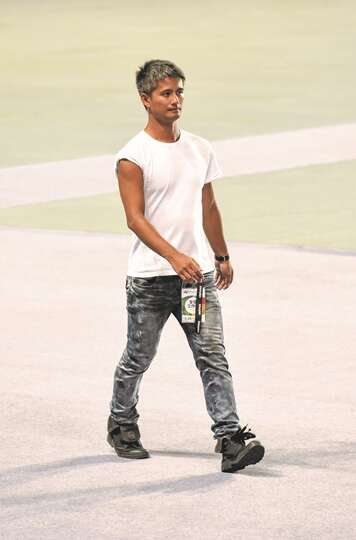
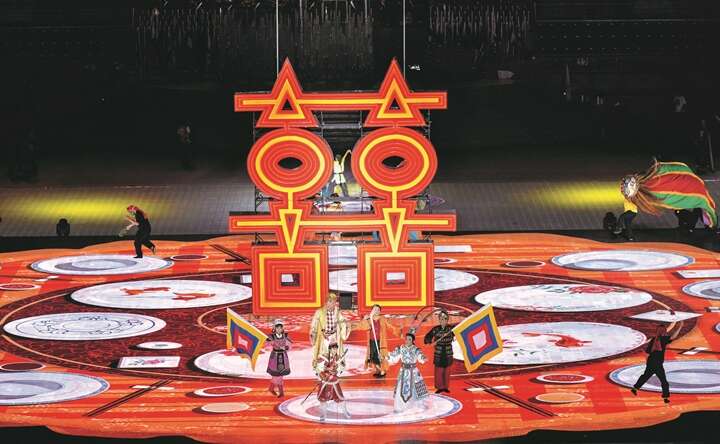
“In contrast to everyday theaters, Nuit Blanche is held in an open space, bringing many different challenges to artists.” As this overnight event always aims to encourage the public to step into artistic fields that sometimes seem unattainable, Hsieh coordinated a joint performance in 2019 for Nuit Blanche Taipei and Taipei Fashion Week (台北時裝週) that combines the elements of cultural relics housed in the National Palace Museum (國立故宮博物院) that people adore, in the hope that common scenes in their daily lives could somehow resonate the audiences. “It offers an opportunity for us to perform in front of those who aren’t familiar with theater arts and will give us some different feedback. These are all interesting and fruitful experiences,” Hsieh recalls.
While Hsieh manifests his experiences in different fields through performances by combining choreography, ideas of space, and technological elements to knock people’s socks off, he encourages other artists to slow down, observe, and feel the beat of Taipei, an ever-changing city, as well as finding a suitable place as a starting point in this place where new and old, as well as nature and humanity combine to live out their dreams through their creations.
Sketching Aspirations on the Runway
Fashion Designer Xinyi Yu 余信誼
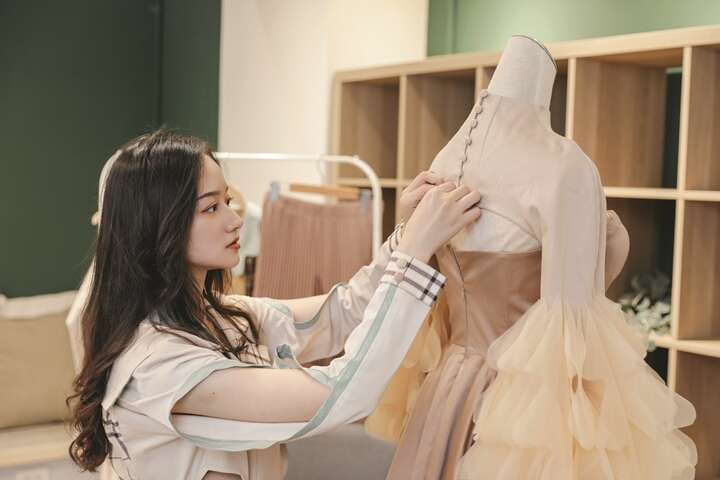
Fashion is a reflection of modern society, and Taipei is a city where you can find all kinds of styles and attitudes. Xinyi Yu, one of the designers selected for the New Breed Show (新生代品牌秀) of Taipei Fashion Week this year, shares with us how she was inspired by Taipei’s architecture and created a unique series.
“My works are generally related to social issues. I hope to spark conversations with others by sharing what I’ve observed,” Yu shares. She values the preservation of Taiwan’s varied cultures, and feels distressed as she sometimes finds old houses in Taiwan being renovated without respect for the past. She thus tries to help more people understand the distinct beauty of old houses in Taiwan through clothing design.
“There are many eclectic buildings built in Taipei between 1895 and the 1920s, such as the Presidential Office Building (總統府), National Taiwan Museum (國立台灣博物館), and National Taiwan University Hospital (國立台灣大學醫學院附設醫院). These are all my sources of inspiration,” says Yu.
The eclectic buildings draw upon multiple styles from different eras that are all equally fascinating to Yu. She transfers these styles into her designs, capturing the varied elements of these old houses, such as red bricks and animal figures, turning them into the colors, patterns, and decorations. “I like looking at old houses on Taipei’s streets and observing how the interaction between these historical buildings and modern society develops vitality,” she tells us.

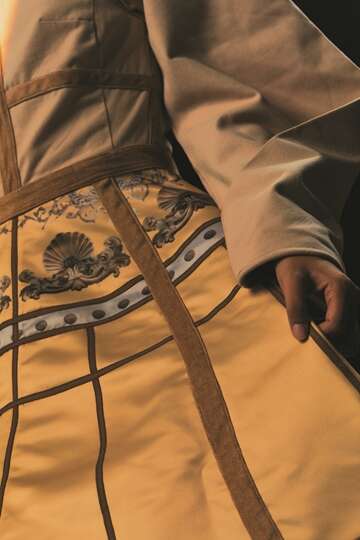
Taipei also provides many resources for clothing production. “The materials I choose are all from Taiwan. I usually select fabrics at the Yongle Market (永樂市場) near the famous Dihua Street (迪化街) in Datong District and ask manufacturers to make or find particular fabrics,” Yu explains as she shows her works. The patterns on the fabrics of the dress are her own design, along with the exquisite pleats, which are all made possible thanks to the support of professional workers at clothing factories.
Yu’s graduation show, however, was canceled due to the COVID-19 pandemic. As she wouldn’t let her works over the years go unseen, she decided to participate in various competitions. In 2020, she was shortlisted for the Taiwan Fashion Design Award (時裝設計新人獎), leading her to be selected as one of the designers for the New Breed Show of the 2022 Taipei Fashion Week. “Being selected for the New Breed Show is a great affirmation to me. I felt more confident in taking the path of clothing design,” Yu recalls.
Taipei Fashion Week, the dream runway for many young talents in the fashion industry, is a twice-a-year event that brings together creativities and prospects of the fashion capital.
“Preparing for Taipei Fashion Week is really pushing the envelope!” Yu tells us. In only two months, she had to design 16 pieces of clothing by picking the right combination from among thousands of fabrics, materials, and colors, while making them acceptable to the mass market, which was completely different from the student shows she had participated in. However, it also broadened her horizon and laid a foundation for her future. “Some stylists came to borrow clothes the day after the show, and I started to receive some invitations for cooperation. I was even invited to overseas fashion weeks,” says Yu. These outcomes and feedback sent her a message that she had made it, and encouraged her to move further.
“Taipei is a city where creators have a chance to shine!” Yu says, adding that she considers Taipei a place full of vitality, with a variety of events and ideas coming up non-stop. With venues such as the Songshan Cultural and Creative Park (松山文創園區), Huashan 1914 Creative Park (華山1914 文化創意產業園區), and POPOP Taipei (瓶蓋工廠台北製造所), creators also have spaces to exhibit their works and bring artworks into people’s lives.
Swinging with Determination and Dedication
Taipei Professional Orchestra Big Band 踢霹歐樂團
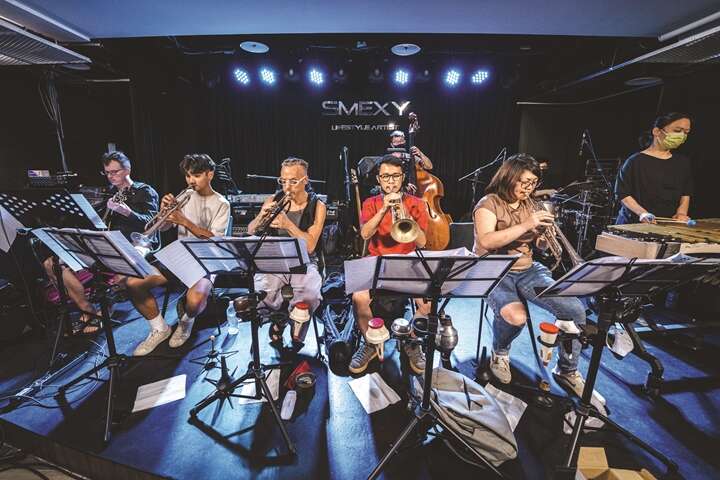
The birth of the Taipei Professional Orchestra (TPO) Big Band was a beautiful accident. In 2020, when most people in the world were panicking due to the pandemic, it was conversely the right time for Jim Geddes and Derrick Lin (林克安) to form a band.
“For me, I’ve always wanted to form a big band in Taipei, because it is just a part of who I am,” says Geddes, the multi woodwind musician, band leader and the founder of TPO. Since many professional musicians based in Taipei had to drop out of their tours and shows disappeared in 2020, it couldn’t have been better timing for him to recruit talents to pursue the dream that has always been in the back of his mind.
Originally from the US, Geddes was among things a Broadway tour music contractor and a freelance musician who toured around the world. On the other hand, Lin is an active bassist in the local music industry.
The duo had known each other in Taipei for many years, yet were finally brought together thanks to their shared love of jazz.
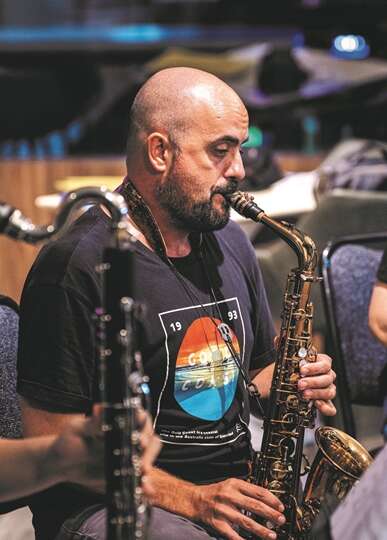
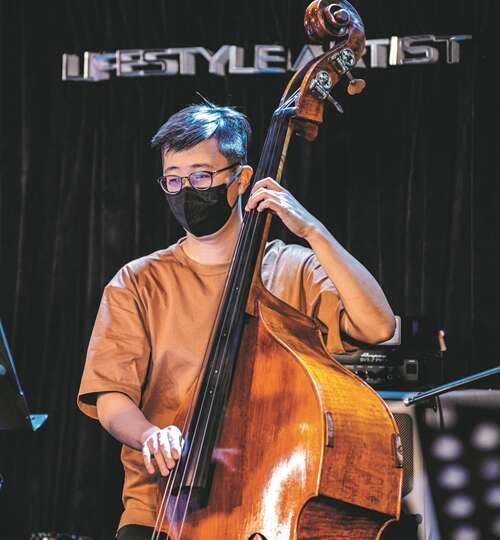
Taipei’s vibrant music scene immediately provided plenty of opportunities for the band to practice and experiment with new music. SMEXY, a live music restaurant on Minsheng East Road (民生東路) in Songshan District, is where TPO first started to swing away. “My first goal was to get the band to play the real, authentic swing, and then I wanted to create new music with the help of other members,” says Geddes.
As many venues in Taipei like SMEXY support the new blood, the band was able to create freely and grow quickly. “Music restaurants like this is exactly where the big bands in the 1940s and 1950s played. This is one of the ways how the music became popular.”
Lin, who now also plays the role of band manager, couldn’t be more excited to share their most recent project. “Taipei Jazz Festival (台北爵士音樂節), for example, was a great platform that gave us a chance to experiment with our music, and the result was phenomenal,” he says. As TPO made their name quickly in the last year, the Taipei Jazz Festival, the biggest jazz festival in Taipei, invited them on stage for the grand finale in 2021.“We got to feature Sauljaljui (戴曉君), an amazing indigenous rock star in Taiwan. Together, we’ve created new, fun and innovative music that made the audience go crazy,” Lin recalls.
The show, now available for viewing on YouTube, indeed reflected the spirit of jazz fusion while expressing certain aspects of Taiwanese music. While TPO swings through the song, rock elements such as distortion pedals and indigenous instruments such as nose flutes are blended in, creating a harmony that mingles east with west. “Big band is like a container to me, and music is what you put in. If you put in interesting music, it comes out interesting,” Lin summarizes.
For any young talents in Taipei who dream about going on the same big stage, Geddes and Lin both encourage them to be brave. “I’ve seen too many students being too shy to reach out to professional musicians,” says Geddes. This is also why TPO is always happy to provide opportunities for young players to participate and“hang out” at their open rehearsals. “The tradition in the US is that you have older guys in the band with all the experience, but you always have innovated younger players, too,” explains Geddes. “It is for the old ones to pass on the tradition. But at the same time, young guys also keep inspiring and pushing the old guys with new ideas, too.”
Lin also adds that new players can take advantage of the resources that Taipei has provided. “In Taiwan, Taipei is definitely the place to find the most jam sessions. That is how we train, practice and grow at the beginning.” Many jazz players, including Geddes and Lin, started their music journey in Taipei by joining the jam sessions at Sappho Live Jazz now in the Zhongshan District. Rhythm Alley and Blue Note Taipei in Daan District, as well as Café Rossiya in Zhongshan District, are also where many players perform before and even after gaining fame.
The journey of TPO won’t stop as the pandemic comes to an end. For Geddes and Lin, the next step is to dream even bigger. “My future goal for this band is to have a world-class big band in Taipei that every jazz fan who comes to Taiwan will be like ‘TPO’s show? That is going to be a great show and I must go!’” Geddes shares.
As a city full of possibilities, Taipei is ready for its future stars to shine.
This article is reproduced under the permission of TAIPEI. Original content can be found on the website of Taipei Travel Net (www.travel.taipei/en).

